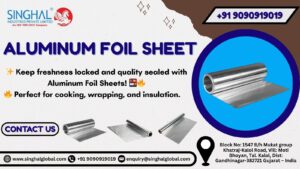Geotextile is a fabric of synthetic nature used to improve soil characteristics, help drainage systems, and facilitate erosion control. Geo Textile bags or Sand Bags are the best solution for a construction project as they are essential for soil management. This is because they prevent erosion and allow the dirt and soil to stay intact.
Making the correct choice regarding which kind of geo textile bags to use depends on the kind of project you are undertaking. Whether you are planning for soil erosion control, stabilizing the soil, or creating a drainage channel, the right geotextile bag must be chosen for you.
How to Make the Right Geo Textile Bags Choice
-
Understand Your Project Needs
As stated previously, the right choice regarding the geotextile bags is to be made depending on the kind of project you are undertaking. Certain factors have to be taken into consideration along with the project you are undertaking. These factors include the circumstances under which the project is taking place, the kind of conditions this geotextile fabric will be exposed to, the weather conditions under which the project will happen, and whether you need the geotextile fabric to be highly durable. Since geo textile fabric comes in various sizes, shapes, and weights, you must pick the right one per your project’s needs.
-
Operation Specifics of Your Project
When choosing a geotextile fabric in accordance with your project needs, it is imperative to understand the operation specifications of your project. Properties of the geo fabric textile include tensile strength, permeability, depth, and shear resistance, which vary from one kind of fabric to the other. Therefore it is vital to take into consideration the operation specifics of your project as that will help in understanding what kind of and how much of the properties are needed to be employed for partaking in the project.
-
Drainage Level
Another factor to consider while deciding the kind of geotextile fabric to select is the drainage level needed in your project. In general terms, two kinds of drainage levels are present while working with geotextile fabric, namely, microporous and microporous. Microporous fabrics permit tiny water droplets to permeate through them and are therefore better suited in areas that require retention of moisture, such as irrigation systems. On the other hand, microporous fabrics allow large-sized droplets to pass through them; however, given the size of the pores, it doesn’t retain much water. Thus, the microporous fabric is best suited for drainage areas where fast removal of water is required.
-
Decide as per Soil Type
The soil type also plays an essential role in deciding what geotextile fabric will be used. Generally, there are two kinds of soils: soft and firm. When working with soft soil, you need a more robust and thicker kind of geo fabric textile as it ensures that the fill placed on top doesn’t slip through. On the other hand, in the case of form soil, a thinner kind of geo fabric textile can be used as it will not be stretching and moving with loads placed on top.
What is the Need to Employ Geo Fabric Textile
Geo fabric textile occupies a very prominent position in construction and landscaping projects. This is primarily due to the fact that it stands as a barrier against soil erosion and prevents the growth of weeds. Suppose geo fabric is not employed in the construction of a landscaping project. In that case, the soil can get easily washed away during incessant heavy rain or strong gusty winds, leading to uneven surfaces and causing possible damage to nearby structures.
Moreover, geo fabric textile also allows drainage, which prevents water pooling and causing any damage to plants or structures. Therefore, it is essential to make a proper detailed decision regarding what kind of geo fabric textile to use to ensure that your construction or landscaping project doesn’t cause much harm to the soil and is thereby stable, long-lasting, and durable. In case of any doubt regarding what kind of geo fabric textile is to be employed for a particular kind of project, it is advisable to consult an expert regarding this topic so that a wrong decision doesn’t end up causing more harm than good.









